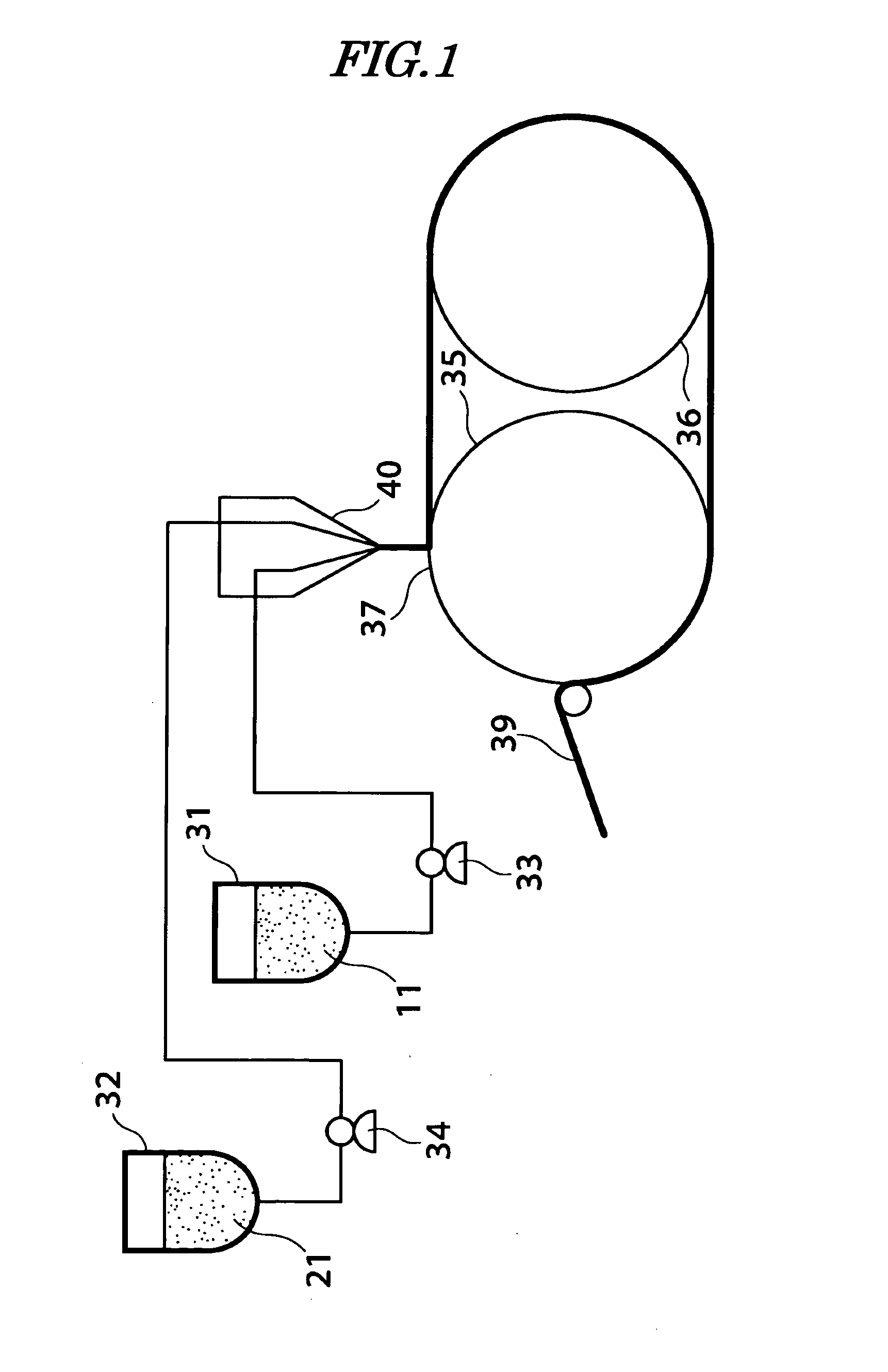Cellulose acylate film, cellulose acylate film with functional thin film, and method for preparation thereof
- Summary
- Abstract
- Description
- Claims
- Application Information
AI Technical Summary
Benefits of technology
Problems solved by technology
Method used
Image
Examples
examples 1 to 6
[0125] In each Example, production of a cellulose acylate solution and a film and evaluation of properties of the obtained film were carried out as follows.
[0126] (1) Measurement of Modulus of Elasticity of Film Surface
[0127] The modulus of elasticity of a surface in the present invention is a value obtained using a surface microhardness tester (FISCHERSCOPE H100VP-HCU: manufactured by Fischer Instruments). Specifically, it is a value obtained from a universal hardness by measuring an indentation depth under a test load using a pyramidal diamond indenter (tip face angle: 136.degree.) and dividing the test load by the surface area of the indentation formed by the test load calculated from the geometrical shape of the indenter. The indentation depth is 1 .mu.m.
[0128] The modulus of elasticity of the film as a whole correlates with the modulus of elasticity of the surface obtained by this test.
[0129] (2) Film Pencil Hardness Test
[0130] The hardness by a pencil scratch test is a value o...
examples 7 and 8
[0145] A cellulose acetate solution without the fillers described in (4) above and the dope of Example 6 shown in Table 1 were prepared, and simultaneously extruded and cast on a stainless support (cooling drum) maintained at -5.degree. C. using a double layer co-casting die as shown in FIG. 1 so that the filler-filled dope was on the stainless support side. Hot air at 50.degree. C. was then passed over the cast dope surface and it was dried for 1 minute, the cast film was peeled from the support and further dried at 120.degree. C. for 30 minutes, and two types of samples of the double-layered structure cellulose acylate film according to the present invention were thus produced as Example 7 and Example 8. The dry thicknesses of the filler filled layer and the layer without filler of the samples thus obtained were as shown in Table 2. The total thickness of the two layers was 100 .mu.m. The hardcoat layer was formed on the filler-filled side.
PUM
| Property | Measurement | Unit |
|---|---|---|
| Pressure | aaaaa | aaaaa |
| Particle size | aaaaa | aaaaa |
| Particle size | aaaaa | aaaaa |
Abstract
Description
Claims
Application Information
 Login to View More
Login to View More - R&D
- Intellectual Property
- Life Sciences
- Materials
- Tech Scout
- Unparalleled Data Quality
- Higher Quality Content
- 60% Fewer Hallucinations
Browse by: Latest US Patents, China's latest patents, Technical Efficacy Thesaurus, Application Domain, Technology Topic, Popular Technical Reports.
© 2025 PatSnap. All rights reserved.Legal|Privacy policy|Modern Slavery Act Transparency Statement|Sitemap|About US| Contact US: help@patsnap.com


